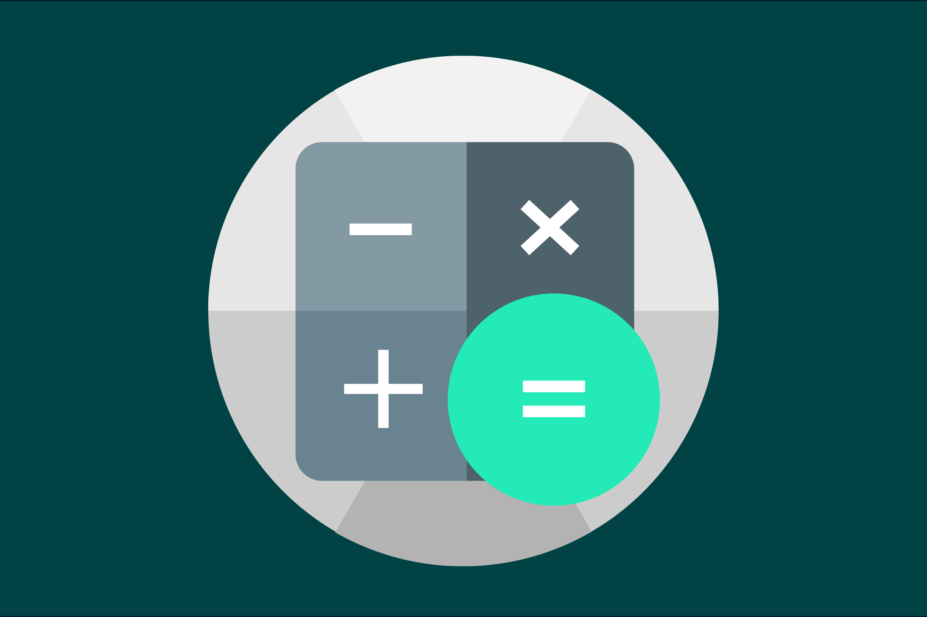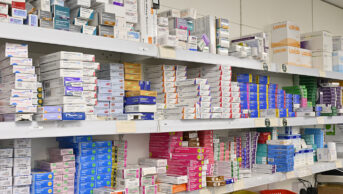
Shutterstock.com
This article was first published on 7 September 2021 and has been updated to account for technical and procedural changes made to the test format in 2022.
Pharmacists are frequently confronted with calculations in their daily practice; the Oriel numeracy test contains ten questions designed to assess a candidate’s current ability. It also acts as a marker when ranking applicants applying for foundation training year placements.
You will be required to complete the numeracy test at a Pearson Vue test centre on the same day as the situational judgement test (SJT). There are numerous test centres available nationally (and internationally), which means you can book your assessment at a location most suitable for you.
Although individual testing stations in the centres will have been allocated to national recruitment candidates, there may be people sitting other tests (such as driving theory tests) at adjacent stations in the venue.
It is also important to note that you will not be allowed to sit the assessment unless you have the appropriate identification (see below).
Numeracy test structure
The numeracy test is designed to provide assurance of an applicant’s ability to carry out basic pharmaceutical calculations, however, these calculations are not provided in a clinical context and are designed to test mathematical ability rather than practice knowledge.
There are 10 questions and the time allowed for the exercise is 20 minutes. Answers will be entered into a ‘free text’ box as opposed to a multiple choice format. There is no need to enter any units for your answer; numerical answers only are required and the test will not allow you to enter letters. Certain models of calculators are allowed — details of permitted models and other resources are detailed below and in the Foundation Pharmacy Recruitment Applicant Handbook.
Although the score for the numeracy test does not count towards the final Oriel candidate score, it may be used in the event of a tie-breaker where the final ranking of two candidates is the same. In this instance, the candidate with the higher numeracy test score will be ranked higher. Please see section 5.6 of the Foundation Pharmacy Recruitment Applicant Handbook for more information regarding tie-breaker rules.
Calculations
There is an expectation that, by the end of a pharmacy candidate’s third year of undergraduate study, they should have a broad enough understanding of certain calculations. The following may be included in the numeracy test:
- Doses and dose regimens;
- Dosage and unit conversions;
- Concentrations (e.g. expressed as w/v, % or 1 in x);
- Dilutions;
- Using provided formulae;
- Quantities to supply.
Some topics may be more complex and, as such, may not be covered until the final year of the MPharm degree or in the foundation training year. For example, the following calculation types are not included in the numeracy test:
- Estimations of kidney function;
- Displacement volumes and values;
- Molecular weight;
- Infusion rates;
- Pharmacokinetics;
- Health economics.
Box: Example calculations
The following questions and answers are provided as examples only and are included to give you an idea of the types of question that will be asked during the numeracy test. Please note that these exact questions will not be asked during the assessment.
Example 1: quantities to supply
You are given the following prescription:
Sodium valproate 200mg enteric coated tablets
Take the following:
200mg in the morning and 400mg at night for 3 days, 400mg in the morning and 400mg at night for 3 days, 400mg in the morning and 600mg at night for 3 days, 600mg in the morning and 600mg at night for 20 days.
How many sodium valproate 200mg enteric coated tablets are required to give the full supply?
Method:
Work out the total number of tablets to be supplied for the morning and evening doses.
Formula to use: number of tablets per day = number of morning tablets + number of evening tablets
Day 1–3 = (1 x 3) + (2 x 3)
= 3 + 6
= 9 tablets
Day 4–6 = (2 x 3) + (2 x 3)
= 6 + 6
= 12 tablets
Day 7–9 = (2 x 3) + (3 x 3)
= 6 + 9
= 15 tablets
Days 10–29 = (3 x 20) + (3 x 20)
= 60 + 60
= 120 tablets
Answer = 156 tablets
Example 2: dilutions
Drug X is in a 1:1,000 solution. What weight of drug X in grams is present in 650mL of this solution? Give your answer to two decimal places.
Formula to use: C1 / V1 = C2 / V2
Where:
C1 = 1g
V1 = 1,000mL
C2 = ?
V2 = 650mL
Therefore:
1g / 1,000mL = C2 / 650mL
C2 = 1g x 650mL / 1,000mL
C2 = 0.65g
Answer: 0.65g
Example 3: calculating volume
A 32-year old female who is allergic to peanuts accidently ingests peanut butter. She is given an intramuscular injection of 0.5mg of adrenaline 1 in 1,000.
What volume of solution was administered to the patient? Give your answer to one decimal place.
Method:
1 in 1,000 = 1g in 1,000mL
= 1,000mg / 1,000mL
= 1mg / mL
= 0.5mg / 0.5mL
Answer: 0.5mL
Tips to remember during the numeracy tests
It is important to prepare appropriately before sitting the numeracy test, but there is some advice that can help ensure the best chance at success, for example:
- Read the questions — this may help avoid unnecessary errors, such as not considering the number of decimal places in an answer;
- Sense check the answer — it is important to ask “is this sensible?” — does the patient need 10,000 aspirin tablets? Or if the candidate has worked out split doses (e.g. half of a tablet/capsule) it is likely that the answer is incorrect;
- Stay focused — the questions could be straightforward, which can lead to complacency, making you more vulnerable to making the errors mentioned previously;
- Time management — spending too long on any one question can lead to rushing subsequent questions. It is OK for you to skip certain questions to come back to later if you are unsure how to answer them, but make sure you come back to those questions;
- Use the calculator — even if the calculation seems simple, this should help minimise errors.
Final pieces of advice
You will be required to bring both the original and a copy of the following documentation to the selection centre:
- A valid passport
- Right to work documents (where required, e.g. biometric residence permit, certificate of sponsorship, letter from UK Immigration Office)
- Bring the correct type of calculator as permitted by Pearson Vue:
- Casio MX-8S-WE — this model is still permitted in the assessment although it has now been discontinued;
- Casio MX 8B-WE / MX-8B;
- Aurora HC133 (please note this calculator is also acceptable for the GPhC registration exam);
- Aurora DT210.
About the authors
Khalid Khan is head of training and professional standards at community pharmacy chain Imaan Healthcare. He is also a foundation year training programme director at Health Education England.
Aamer Safdar is principal pharmacist and lead for education and development at Guy’s and St Thomas’ NHS Foundation Trust, where he manages the preregistration programme at his hospital.
Atif Shamim is primary care lead for London and South East at Health Education England, and the national clinical lead for the foundation year recruitment scheme.


